Christopher A. Cullis.978-0-471-37314-8, 978-0-471-38224-9
Table of contents :
Flow Cytometry with Plant Cells……Page 2
Contents……Page 6
Preface……Page 18
List of Contributors……Page 22
1.1 Origins……Page 26
1.2 From Absorption to Fluorescence, from Imaging to Flow……Page 27
Fluorescence Microscopy and the Fluorescent Antibody Technique……Page 28
Computers Meet Cytometers: The Birth of Analytical Flow Cytometry……Page 29
The Development of Cell Sorting……Page 32
1.3 The Growth of Multiparameter Flow Cytometry……Page 33
1.4 Bench-tops and Behemoths: Convergent Evolution……Page 36
1.5 Image Cytometry: New Beginnings?……Page 39
References……Page 40
2.1 Introduction……Page 44
2.2 A Brief History of Flow Cytometry……Page 45
2.3 Components of a Flow Cytometer……Page 46
Fluidics……Page 47
Optics……Page 50
Electronic Systems……Page 52
2.4 Flow Cytometric Informatics……Page 55
2.5 Spectral Compensation……Page 58
2.6 Cell Sorting……Page 59
2.8 Conclusions……Page 62
References……Page 64
Overview……Page 66
3.1 Introduction……Page 67
3.2 Fluorescence is a Fundamental Parameter……Page 68
Difficulties with Plants and their Cells……Page 69
Protoplasts are somewhat ‘‘Easier’’ than Intact Cells……Page 70
Going for Organelles……Page 71
Protoplasts……Page 72
Gene Expression……Page 73
Cell Nuclei……Page 74
Ploidy Levels……Page 75
Aneuploidy……Page 76
Cell Cycle and Endopolyploidy……Page 77
Reproductive Pathways……Page 78
Nuclear Genome Size……Page 79
DNA Base Content……Page 80
Sorting of Nuclei……Page 81
Chloroplasts……Page 82
Plant Pathogens……Page 83
3.5 A Flow Cytometer in Every Laboratory?……Page 84
3.6 Conclusions and Future Trends……Page 85
References……Page 86
4.1 Introduction……Page 92
Replication…Division Phases……Page 94
Generative Polyploidy Levels……Page 95
Somatic Polyploidy……Page 96
4.3 Units for Presenting DNA Amounts and their Conversion Factors……Page 97
Selection of the Tissue……Page 99
Reagents and Solutions……Page 100
Isolation Bu ers and DNA Staining……Page 101
Types of Standardization……Page 105
Requirement of Internal Standardization … a Practical Test……Page 107
Biological Similarity……Page 108
Availability……Page 109
Reliability of C-Values……Page 110
Studies on Plant Standards……Page 111
Suggested Standards……Page 113
What are Fluorescence Inhibitors and Coatings of Debris?……Page 114
Experiments with Tannic Acid……Page 117
4.7 Quality Control and Data Presentation……Page 120
4.8 Future Directions……Page 123
References……Page 124
5.1 Introduction……Page 128
Relative DNA Content, Ploidy and Flow Cytometry……Page 129
General Guidelines for Ploidy-level Studies……Page 130
Preserved or Dormant Tissue……Page 133
Pollen……Page 136
DNA Content Variation within Individuals……Page 138
Systematics of Heteroploid Taxa……Page 139
Phylogenetic Inference……Page 142
Systematics of Homoploid Taxa……Page 143
Invasion Biology……Page 144
Evolutionary Dynamics of Populations with Ploidy Variation……Page 145
Ploidy Level Frequencies at Di erent Life Stages (Temporal Variation)……Page 146
Unreduced Gametes and Polyploidy……Page 147
Hybridization……Page 149
Trophic Level Interactions and Polyploidy……Page 150
5.5 Future Directions……Page 151
Acknowledgments……Page 152
References……Page 153
6.1 Introduction……Page 156
Traditional Techniques……Page 159
Identification of BIII, BIV and MI Individuals after Selfing or Intraploidy
Pollinations……Page 164
Crossing of Parents with Di erent Ploidy or with Dominant Markers……Page 165
Flow Cytometric Analyses of the Relative DNA Content of Microspores or Male Gametes……Page 166
6.3 A Recent Innovative Method: the Flow Cytometric Seed Screen (FCSS)……Page 167
Advantages and Limitations of the FCSS……Page 168
Botanical Studies……Page 171
Methodological Implications……Page 172
6.4 Flow Cytometry with Mature Seeds for other Purposes……Page 174
6.5 Conclusions……Page 175
References……Page 176
7.1 Introduction……Page 178
7.2 Why is Genome Size Important?……Page 179
7.3 What is Known about Genome Size in Plants?……Page 180
Angiosperms……Page 181
Gymnosperms……Page 182
Algae……Page 183
7.4 The Extent of Genome Size Variation across Plant Taxa……Page 184
7.5 Understanding the Consequences of Genome Size Variation: Ecological and Evolutionary Implications……Page 185
Influence of Genome Size on Developmental Lifestyle and Life Strategy……Page 186
Ecological Implications of Genome Size Variation……Page 188
Genome Size and Threat of Extinction……Page 191
Consequences of Genome Size Variation for Survival in a Changing World……Page 192
7.6 Methods of Estimating Genome Size in Plants and the Impact of Flow Cytometry……Page 193
Internal Standardization……Page 194
Awareness of the Possible Interference of DNA Staining……Page 195
Gymnosperms……Page 196
7.7 Recent Developments and the Future of Flow Cytometry in Genome Size Research……Page 197
References……Page 199
8.1 Introduction……Page 202
8.2 Analysis of Base Composition by Flow Cytometry……Page 203
Fluorescence of Base-Speci“c Dyes: Theoretical Considerations……Page 205
Base Composition of Plant Species Determined by Flow Cytometry and its Relation to Genome Size and Taxonomy……Page 210
Comparison of Flow Cytometric Results with Base Composition Determined by other Physico-Chemical Methods……Page 229
Possible Sources of Error in Determination of Base Composition by Flow Cytometry……Page 230
8.3 Conclusions……Page 236
References……Page 238
9.1 Introduction……Page 242
9.2 Viability Assessment……Page 243
Viability Tests for Spores and Bacteria……Page 244
9.3 Immunodetection……Page 247
Microsphere Immuno Assay……Page 249
Detection of Plant Pathogenic Bacteria and Viruses……Page 250
Paramagnetic Microsphere Immuno Assay……Page 251
9.4 Conclusions and Future Prospects……Page 252
References……Page 254
Protoplast Preparation……Page 256
Adaptation of Flow Cytometric Instrumentation for Analysis of Protoplasts……Page 258
Parametric Analyses Available for Protoplasts using Flow Cytometry……Page 259
Protoplast Size……Page 262
Protoplast Light Scattering Properties……Page 263
Protoplast Viability and Physiology……Page 264
Protoplast Cell Biology……Page 268
The Cell Cycle……Page 269
10.3 Walled Plant Cells: Special Cases for Flow Analysis and Sorting……Page 271
10.4 Prospects……Page 272
References……Page 273
11.1 Introduction……Page 276
The Chloroplast……Page 277
Autofluorescence……Page 280
11.3 Progress of Research……Page 284
Chloroplasts from C3 Plants……Page 285
Chloroplasts from C4 Plants……Page 286
11.4 Conclusion……Page 288
References……Page 289
12.1 Introduction……Page 292
12.2 Nuclear DNA Content and Genome Size Analysis……Page 296
Isolation and Fixation of Nuclei……Page 297
Standardization……Page 299
Fluorochromes for Estimation of Nuclear DNA Content……Page 300
DNA Content and Genome Size Studies……Page 301
Haptophyta (Prymnesiophyta)……Page 302
Phaeophyta……Page 303
Bryophytes……Page 305
12.3 Future Perspectives……Page 308
Acknowledgments……Page 309
References……Page 310
Overview……Page 312
Particles in Surface Water……Page 313
Distributions in the Aquatic Environment……Page 314
Analytical Approach……Page 316
Limitations and Pitfalls of using Biomedical Instruments……Page 317
Instrument Modi“cation and Specialized Cytometers……Page 318
Sizing and Discrimination of Cells……Page 320
More Information per Particle: From Single Properties to (Silico-) Imaging……Page 322
Sample Preparation……Page 326
Critical Scales and Sampling Frequency……Page 327
Platforms for Aquatic Flow Cytometry……Page 328
Species Screening: Cultures……Page 330
Phytoplankton Species Biodiversity……Page 332
Population-related Processes……Page 333
Cell-related Processes and Functioning……Page 336
13.7 Marine Optics and Flow Cytometry……Page 339
13.8 Future Perspectives……Page 340
Acknowledgments……Page 343
References……Page 344
14.1 Introduction……Page 348
14.2 Univariate Cell Cycle Analysis in Plant Cells……Page 350
14.3 BrdUrd Incorporation to Determine Cycling Populations……Page 351
14.4 Cell Cycle Synchronization Methods: Analysis of Cell Cycle Transitions in Cultured Plant Cells……Page 352
14.6 Root Meristems for Cell Cycle Synchronization……Page 360
14.7 Study of Cell Cycle Regulation by using Synchronized Cell Cultures and Flow Cytometry……Page 361
14.8 Cell Cycle and Plant Development……Page 363
14.10 Cell Type-specific Characterization of Nuclear DNA Content by Flow Cytometry……Page 364
14.11 Other Methods and Imaging Technologies to Monitor Cell Cycle Parameters and Cell Division Kinetics in Developing Organs……Page 365
14.12 Concluding Remarks……Page 367
References……Page 368
15.1 Introduction……Page 374
Chromosome Counts……Page 376
Flow Cytometry……Page 377
Evaluation of Histograms……Page 378
Quantification of the Degree of Endopolyploidy……Page 379
15.3 Occurrence of Endopolyploidy……Page 380
Endopolyploidy in Ecotypes and Varieties……Page 381
Endopolyploidy in Di erent Life Strategies……Page 382
Endopolyploidy in Organs……Page 384
Genome Size and Endopolyploidy……Page 387
Environmental Factors……Page 388
Symbionts and Parasites……Page 389
Phytohormones……Page 390
15.5 Dynamics of Endopolyploidization……Page 391
Endopolyploidy in Crop Plants……Page 392
Culture and Plant Regeneration……Page 393
15.7 Conclusions……Page 394
References……Page 395
Overview……Page 398
16.1 Introduction……Page 399
16.2 How Does it Work?……Page 400
16.3 How it All Began……Page 402
Biological Systems for Chromosome Isolation……Page 404
Preparation of Chromosome Suspensions……Page 408
Bivariate Analysis of AT and GC Content……Page 410
Assignment of Chromosomes to Peaks on Flow Karyotypes……Page 411
Chromosome Sorting……Page 412
Two-step Sorting……Page 414
Flow Karyotyping……Page 415
Cytogenetic Mapping……Page 417
Recombinant DNA Libraries……Page 421
16.6 Conclusions and Future Prospects……Page 423
References……Page 425
17.1 Introduction……Page 430
Current Methods for Global Analysis of Gene Expression……Page 431
Methods Based on Hybridization……Page 432
Methods Based on Sequencing……Page 433
Emerging Sequencing Technologies……Page 434
Other -omics Disciplines and Technologies……Page 435
Transgenic Markers Suitable for Flow Cytometry and Sorting……Page 436
Subcellular Targeting as a Means for Transgenic Analysis……Page 437
Protoplast and Cell Sorting Based on Endogenous Properties……Page 439
Protoplast Sorting Based on Transgenic Markers……Page 441
Sorting of Nuclei Based on Transgenic Markers……Page 442
Use of Protoplasts for Con“rmatory Studies……Page 443
Analysing Noise in Gene Expression……Page 444
Acknowledgments……Page 445
References……Page 446
18.1 Introduction……Page 448
18.2 Taxonomic Representation in DNA Content Studies……Page 450
18.3 Nuclear Isolation and Staining Buffers……Page 452
18.4 Standardization and Standards……Page 455
18.5 Fluorochromes……Page 458
18.6 Quality Measures of Nuclear DNA Content Analyses……Page 459
18.8 Instrumentation……Page 460
18.9 Where Are the Results Published?……Page 461
18.10 Conclusion……Page 462
References……Page 463
Index……Page 464
Related Titles……Page 480
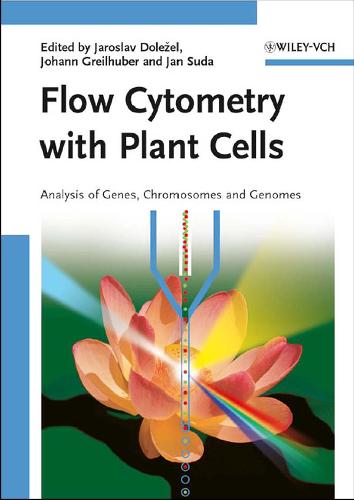
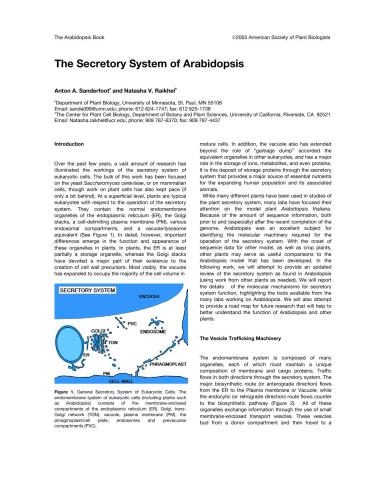

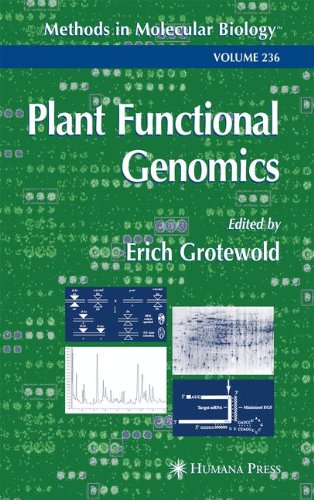
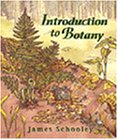
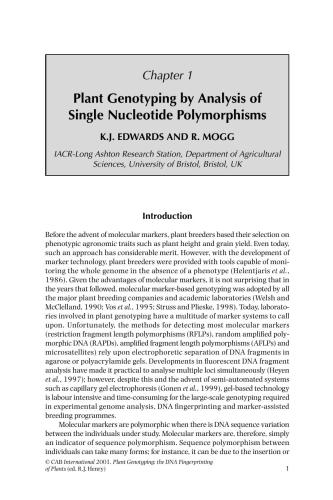

Reviews
There are no reviews yet.